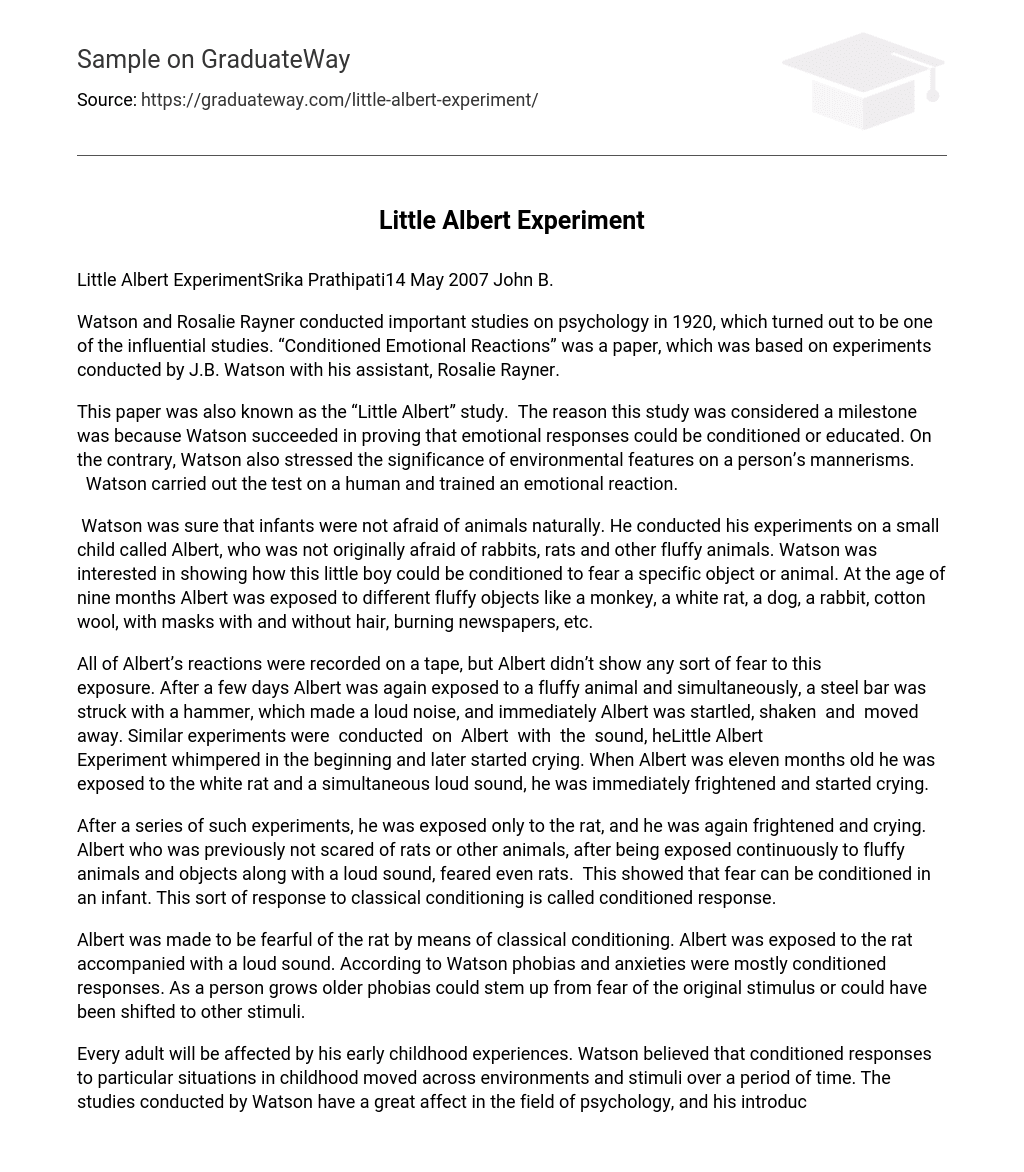Watson and Rosalie Rayner conducted important studies on psychology in 1920, which turned out to be one of the influential studies. “Conditioned Emotional Reactions” was a paper, which was based on experiments conducted by J.B. Watson with his assistant, Rosalie Rayner.
This paper was also known as the “Little Albert” study. The reason this study was considered a milestone was because Watson succeeded in proving that emotional responses could be conditioned or educated. On the contrary, Watson also stressed the significance of environmental features on a person’s mannerisms. Watson carried out the test on a human and trained an emotional reaction.
Watson was sure that infants were not afraid of animals naturally. He conducted his experiments on a small child called Albert, who was not originally afraid of rabbits, rats and other fluffy animals. Watson was interested in showing how this little boy could be conditioned to fear a specific object or animal. At the age of nine months Albert was exposed to different fluffy objects like a monkey, a white rat, a dog, a rabbit, cotton wool, with masks with and without hair, burning newspapers, etc.
All of Albert’s reactions were recorded on a tape, but Albert didn’t show any sort of fear to this exposure. After a few days Albert was again exposed to a fluffy animal and simultaneously, a steel bar was struck with a hammer, which made a loud noise, and immediately Albert was startled, shaken and moved away. Similar experiments were conducted on Albert with the sound, heLittle Albert Experiment whimpered in the beginning and later started crying. When Albert was eleven months old he was exposed to the white rat and a simultaneous loud sound, he was immediately frightened and started crying.
After a series of such experiments, he was exposed only to the rat, and he was again frightened and crying. Albert who was previously not scared of rats or other animals, after being exposed continuously to fluffy animals and objects along with a loud sound, feared even rats. This showed that fear can be conditioned in an infant. This sort of response to classical conditioning is called conditioned response.
Albert was made to be fearful of the rat by means of classical conditioning. Albert was exposed to the rat accompanied with a loud sound. According to Watson phobias and anxieties were mostly conditioned responses. As a person grows older phobias could stem up from fear of the original stimulus or could have been shifted to other stimuli.
Every adult will be affected by his early childhood experiences. Watson believed that conditioned responses to particular situations in childhood moved across environments and stimuli over a period of time. The studies conducted by Watson have a great affect in the field of psychology, and his introduction of relaxation in cognitive therapies is widely used and acclaimed. Watson must have faced some challenges in using animals for his experiments.
Obtaining the animals and acquiring the necessary permissions to use animals for his experiments must have been very difficult. There always must have been the fear of using animals in conjunction with an infant, as there are chances of any accidents occurring during the experiments.
References
- How Do Psychologists Define Learning’, Learning.Retrieved 14 May 2007, http://scienceofpsychology.com/prospectus/chapter-07.pdf
- ‘Little Albert’, Retrieved 14 May 2007, http://www.psychology.sbc.edu/Little%20Albert.htm
- Ben Harris, ‘Whatever Happened to Little Albert’, Vassar CollegeRetrieved 14 May 2007, http://htpprints.yorku.ca/archive/00000198/01/BHARRIS.HTM





